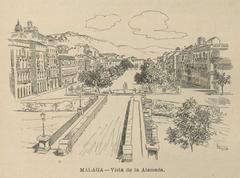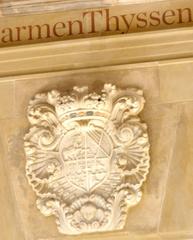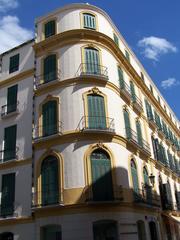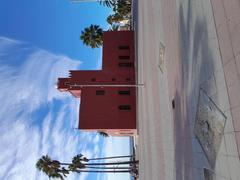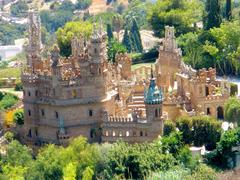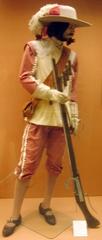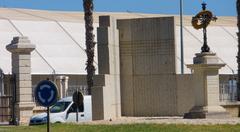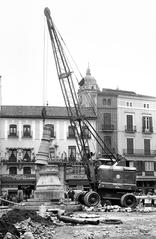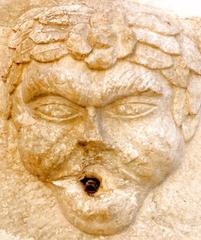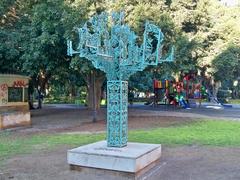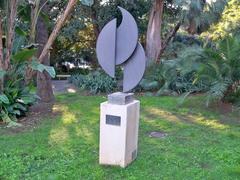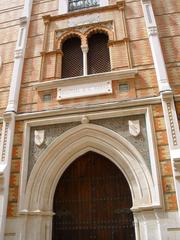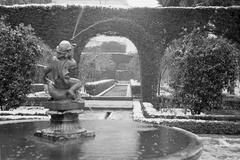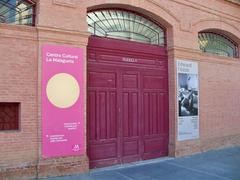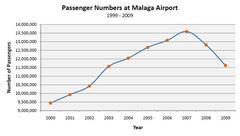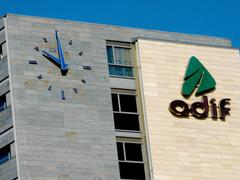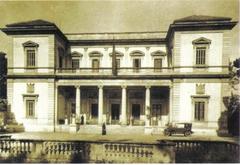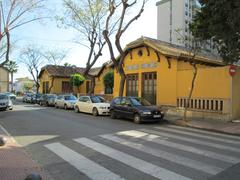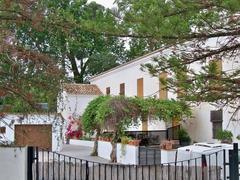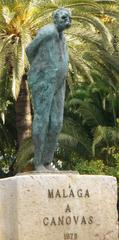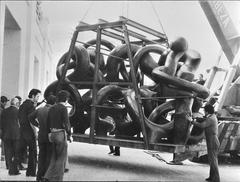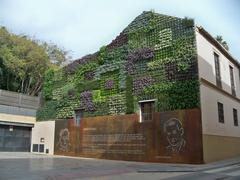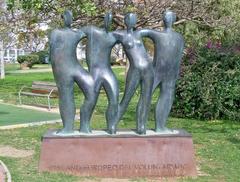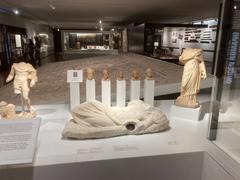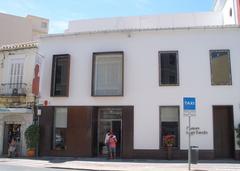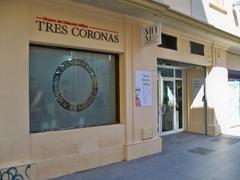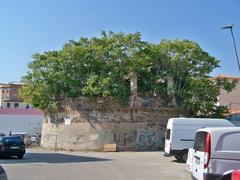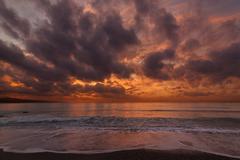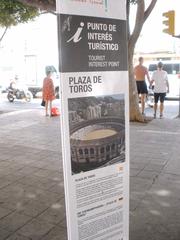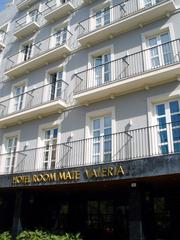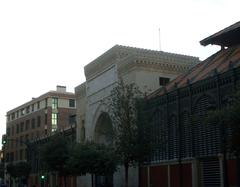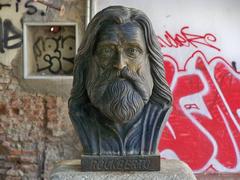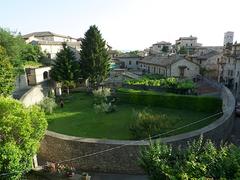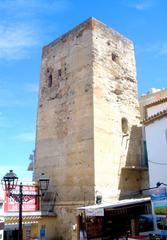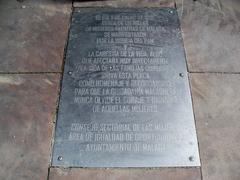Visiting Muelle 1 - Hours, Tickets, and Attractions in Málaga, Spain
Publishing Date: 17/07/2024
Introduction to Muelle 1
Nestled in the heart of Málaga, Spain, Muelle 1 - Ricardo Gross stands as a testament to the seamless blend of rich historical heritage and modern leisure and commercial activities. This dynamic destination, forming a significant part of the Port of Málaga, offers an unforgettable experience for visitors, whether they are history enthusiasts, culture buffs, or simply looking for a unique place to explore. Muelle 1 has evolved over centuries, witnessing the influence of various civilizations and adapting to the changing demands of global trade and tourism. From its origins as a Phoenician trading hub to its current status as a vibrant commercial and recreational space, Muelle 1 encapsulates the essence of progress and tradition.
This comprehensive guide will take you through the fascinating history of Muelle 1, provide essential visitor information, and highlight its top attractions, ensuring you make the most out of your visit to this captivating port area. (Málaga Turismo, Muelle Uno)
Contents Overview
- Introduction
- Early Development and Historical Significance
- Modernization in the 19th and 20th Centuries
- Transformation into a Leisure and Commercial Hub
- Cultural and Historical Landmarks
- Visitor Information
- Economic Impact and Tourism
- Future Prospects and Ongoing Developments
- FAQ
- Conclusion
Discover Muelle 1 in Málaga - History, Visitor Info, and Top Attractions
Early Development and Historical Significance
Muelle 1, also known as Pier 1, is a significant part of the Port of Málaga, one of the oldest ports in Spain. The port’s history dates back to the Phoenician era around 1000 BC when it served as a crucial trading hub. The strategic location of Málaga on the Mediterranean coast made it an essential point for maritime trade and cultural exchange. Over the centuries, the port has seen various civilizations, including the Romans and Moors, each leaving their mark on its development.
During the Roman period, Málaga was known as Malaca, and the port played a vital role in the export of local products such as olive oil, wine, and fish sauce. The Moors, who ruled the region from the 8th to the 15th century, further enhanced the port’s infrastructure, making it a bustling center for trade with North Africa and the Middle East.
Modernization in the 19th and 20th Centuries
The 19th century marked a period of significant transformation for the Port of Málaga. The industrial revolution brought advancements in maritime technology and infrastructure. In 1880, the construction of new port facilities began, which included the development of Muelle 1. This modernization aimed to accommodate larger vessels and increase the port’s capacity for international trade.
The early 20th century saw further enhancements, with the construction of warehouses, docks, and other facilities to support the growing maritime activities. The port played a crucial role during the Spanish Civil War (1936-1939), serving as a strategic point for the Republican forces. Post-war, the port continued to evolve, adapting to the changing demands of global trade and tourism.
Transformation into a Leisure and Commercial Hub
The late 20th and early 21st centuries brought a new vision for Muelle 1. Recognizing the potential for tourism and leisure, the local authorities initiated a comprehensive redevelopment project. The goal was to transform the area into a vibrant commercial and recreational space while preserving its historical essence.
The redevelopment project, completed in 2011, included the construction of modern shopping centers, restaurants, and cultural spaces. The design aimed to blend contemporary architecture with the historical elements of the port, creating a unique and attractive destination for both locals and tourists. The project also focused on enhancing the accessibility and connectivity of Muelle 1 with the rest of the city, making it a central hub for social and cultural activities.
Cultural and Historical Landmarks
Muelle 1 is home to several cultural and historical landmarks that reflect its rich heritage. One of the most notable is the Centre Pompidou Málaga, a branch of the famous Parisian museum, which opened in 2015. The museum, housed in a striking glass cube, features a diverse collection of modern and contemporary art, attracting art enthusiasts from around the world. (Centre Pompidou Málaga)
Another significant landmark is the Chapel of the Port, a small but historically important chapel that dates back to the 18th century. The chapel, dedicated to the Virgen del Carmen, the patron saint of sailors, serves as a reminder of the port’s maritime heritage and its importance to the local community.
Visitor Information
- Muelle 1 Visiting Hours - Open daily from 10:00 AM to 10:00 PM.
- Muelle 1 Tickets - Entry to Muelle 1 is free, but some attractions like the Centre Pompidou Málaga may have admission fees.
- Getting There - Muelle 1 is easily accessible by public transport, including buses and taxis. It’s also a pleasant walk from the city center.
- Travel Tips - Wear comfortable shoes for walking. Don’t miss the sunset views from the port!
Economic Impact and Tourism
The transformation of Muelle 1 has had a profound impact on the local economy. The area has become a major tourist attraction, drawing millions of visitors each year. The combination of shopping, dining, and cultural experiences has made it a must-visit destination in Málaga. The economic benefits extend beyond tourism, as the redevelopment has also created numerous job opportunities and boosted local businesses.
The port continues to play a vital role in Málaga’s economy, with Muelle 1 serving as a key component of its success. The integration of commercial and leisure activities has created a dynamic environment that caters to a diverse range of interests and preferences.
Future Prospects and Ongoing Developments
Looking ahead, Muelle 1 is poised for further growth and development. The local authorities have outlined plans to enhance the area’s infrastructure and expand its offerings. Future projects include the construction of additional cultural spaces, improved transportation links, and the introduction of new recreational facilities.
The ongoing commitment to preserving the historical essence of Muelle 1 while embracing modernity ensures that it will remain a vibrant and attractive destination for years to come. The balance between heritage and innovation is key to its continued success and significance in Málaga’s cultural and economic landscape.
FAQ
Q - What are the visiting hours for Muelle 1?
A - Muelle 1 is open daily from 10:00 AM to 10:00 PM.
Q - Are there guided tours available at Muelle 1?
A - Yes, guided tours are available for certain attractions within Muelle 1, including the Centre Pompidou Málaga. Check their official websites for more details.
Q - What are the ticket prices for Centre Pompidou Málaga?
A - Ticket prices for the Centre Pompidou Málaga vary. Please visit their official website for the most up-to-date information.
Conclusion
Muelle 1 in Málaga stands as a testament to the city’s rich maritime history and its ability to adapt and evolve with the times. From its early days as a Phoenician trading post to its current status as a bustling commercial and leisure hub, Muelle 1 embodies the spirit of progress and tradition. The area’s transformation into a vibrant destination highlights the importance of preserving historical heritage while embracing modernity, ensuring a memorable experience for all who visit.
Visit and Stay Up to Date
For more information on Muelle 1 and to stay up to date with the latest news and events, download the Audiala mobile app, check out other related posts, or follow us on social media.
Sources and Further Reading
- Discover Muelle 1 in Málaga - History, Visitor Info, and Top Attractions, 2024, Author https://www.malagaturismo.com
- Visiting Muelle 1 - Ricardo Gross in Málaga - History, Tickets, and Tips, 2024, Author https://www.muelleuno.com
- Discover Muelle 1 in Málaga - Attractions, Visiting Hours, and Tickets, 2024, Author https://centrepompidou-malaga.eu, https://www.malagaforkids.com
